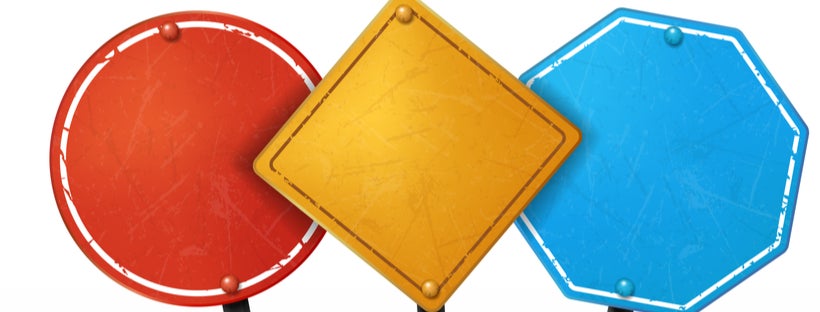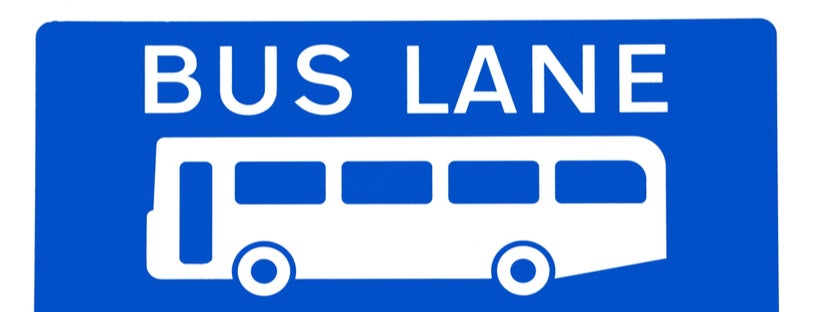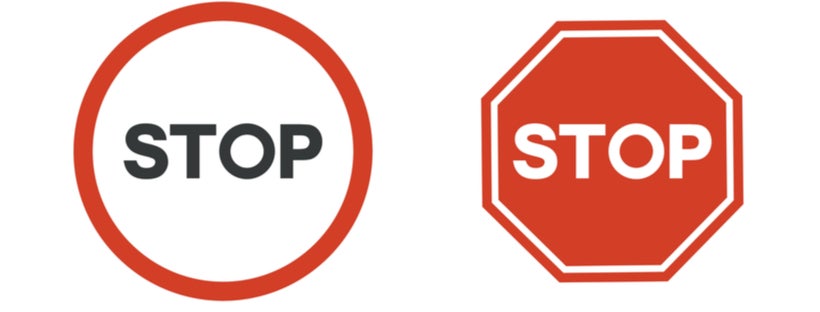From 16 year-olds getting behind the wheel for the first time to experienced drivers who have been behind the wheel for decades, driving is a part of many people’s daily lives. With it being such a core aspect of American culture, over the years a multitude of road signs have been developed, all with different meanings based on the combinations of color, shape, and text. This guide will help you identify and understand key road signs you’ll encounter on your travels.
What Do Different Colors Signify?

Road signs, acrylic signs, flags, and decals in the United States come in various colors. These shapes and colors can have different meanings:
- Red: Red is only used on the stop, yield, and prohibition signs.
- White: All regulatory signs always have a white background.
- Yellow: Yellow on road signs is used to convey a general warning or cautionary message.
- Green: Green road signs mainly refer to permitted traffic direction or movement.
- Fluorescent Yellow or Green: These colors are primarily reserved for pedestrian crossings and school zones.
- Coral: Coral is mostly found on incident management signs.
- Brown: Brown color guides you to public recreation or cultural interest sites.
- Orange: Orange road signs are mainly used for warning and guidance in roadway work zones.
- Blue: Blue road signs pinpoint user services, tourist information, or evacuation routes.
Different Road Signs In the USA
Warning Signs
Most of the warning signs in the United States are red or yellow to advise of potential danger. Among these are the following signs
- Steep Curve Ahead
- Steep Descent Ahead
- Railroad Crossing Ahead
- Heavy Crosswinds in Area
- Road Narrows
- Watch Out for Falling Rocks
- Warning for Cyclists
- Traffic Light Ahead
Information Signs
Information signs in the United States are among the most frequently used road signs. They are generally used to share important prompts about the road ahead with motorists. These signs can include:
- One-way Traffic
- Road Closed
- Lane for Cyclists
- Bus Lane
- Parking Permitted
- Next Exit Information
Mandatory Road Signs

Mandatory road signs are primarily used to make drivers aware of specific tasks they need to perform. These signs are considered the most important type of road signs:
- Mandatory Truck Lane
- Right Lane Passing Only
- Minimum Speed
- Right Lane Must Turn Right
- Left Lane Passing Only
Prohibitory Signs
Used on all road types in the United States, prohibitory signs restrict certain types of vehicles and maneuvers such as:
- No U-Turn
- Speed Limit
- Speed Limit Ends
- Cyclists Not Permitted
- Pedestrians Not Permitted
- No Parking
- No Entry/One-way Traffic
- No Left Turn
Priority Signs

Priority road signs clarify who has priority at the right of way. These signs alert drivers about how they should interact with upcoming motorists. Among some of the important priority road signs are:
- Yield
- Roundabout Ahead
- Stop Sign
- Crossroad Ahead
- Keep Moving
Road Sign Shapes and Their Meaning
Similar to colors, the standardization of shapes in road signs makes it easier for anyone driving on the road to quickly receive important information. Each shape signifies a specific action or cautionary message to drivers. Here are some of the common shapes in road signs and their meaning:
- Octagon: The octagon shape is mainly used for stop signs.
- Round: Round road signs are used for railroad signs and will generally have flashing lights and a black X across the front.
- Triangle: Triangle shapes are only used to signal drivers to yield to oncoming traffic.
- Diamond: Diamond-shaped road signs are reserved for hazard signs, which warn drivers to be aware of potential safety concerns, such as falling rocks, dangerous road conditions, or pedestrian or wildlife crossings.
- Rectangular: While horizontal rectangular signs are used for traffic signs or regulatory signs, vertical rectangular signs are primarily used to guide motorists with street signs, traffic light prompts, and speed limit information.
Whether you are looking for safe holiday travel, studying for your driver’s exam, or have come across an unusual sign that you do not remember, it’s always a good idea to refresh your memory of safety reminders.
Knowing the difference between the different colors, shapes, and messages of road signs will keep you and other motorists safe. Recognizing common road signs and knowing their meanings can help you quickly make safe driving decisions. Knowing this information will keep you safe while you travel this holiday season and beyond. So, next time you have a question about a traffic law or road sign, consult this guide and the U.S. Department of Transportation’s comprehensive list of road signs here.

 Posted in
Posted in 


